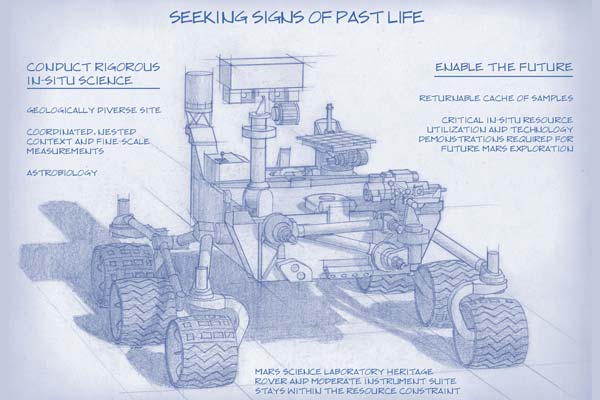
U of T scientist to play key role on Mars 2020 Rover Mission
Published: August 6, 2014
When NASA’s next rover lands on Mars in 2020 to conduct unprecedented investigations, the seven highly-sophisticated instruments on board will include a long-anticipated radar with a U of T connection. Selected from 58 proposals from researchers and engineers around the world, the ground-penetrating radar known as RIMFAX was developed by a team of researchers that includes Rebecca Ghent of the Department of Earth Sciences.
“I'm very excited to be part of this mission,” said Ghent. “The community has been talking about putting a ground-penetrating radar on a Mars rover for a long time, and I'm delighted that I get to be part of the team to do it. I expect that it will give us something that Earth geologists take for granted, but is very rare for planetary geologists: a view into the third or vertical dimension.”
The Radar Imager for Mars’ Subsurface Exploration (RIMFAX) will conduct shallow profiling of the geological structure of Martian subsurface. As the rover drives along the surface, it aims to gather evidence of the geological processes that shaped Mars’ sedimentary environment, search for evidence of past habitable environments and identify variations in subsurface composition. (See the RIMFAX featured in the rover diagram below)
Unravelling the geological history of any region on any planet requires that third dimension, because it represents time, explains Ghent. Without it, we only have a snapshot, representing a single point in time.
“Ground-penetrating radar gives us the opportunity to detect things beneath the surface, and should provide a wealth of new information that will help us put the rest of the rover’s findings into perspective. The opportunity to discover the geological history is what really excites me.”
Ghent’s tasks prior to launch will be to measure the electrical properties of materials that represent analogs of those that will be found on Mars, so that the scientists can interpret the radar’s results. She will also participate in field testing of instrument prototypes and related data analysis. After launch and during the science phase of the mission, Ghent will be involved in science planning for the investigation, data processing and scientific analysis as well as geological interpretation of the radar data.
How does one end up being part of a Mars rover mission? Ghent’s interest in the geological process on the terrestrial planets – Venus, Mercury, Earth, the Moon and Mars – began in graduate school when she was analyzing radar data from the Magellan mission to Venus. She has been involved in various missions since, including the Lunar Reconnaissance Orbiter, which launched in 2009, and the OSIRIS REx asteroid sample return mission, scheduled for launch in 2016.
The Mars 2020 mission will be based on the design of the Mars Science Laboratory rover, Curiosity, which landed on Mars almost two years ago and is currently operating there. In addition to geological assessments of the rover’s landing site, Mars 2020 hopes to determine the potential habitability of the environment and directly search for signs of ancient Martian life.



